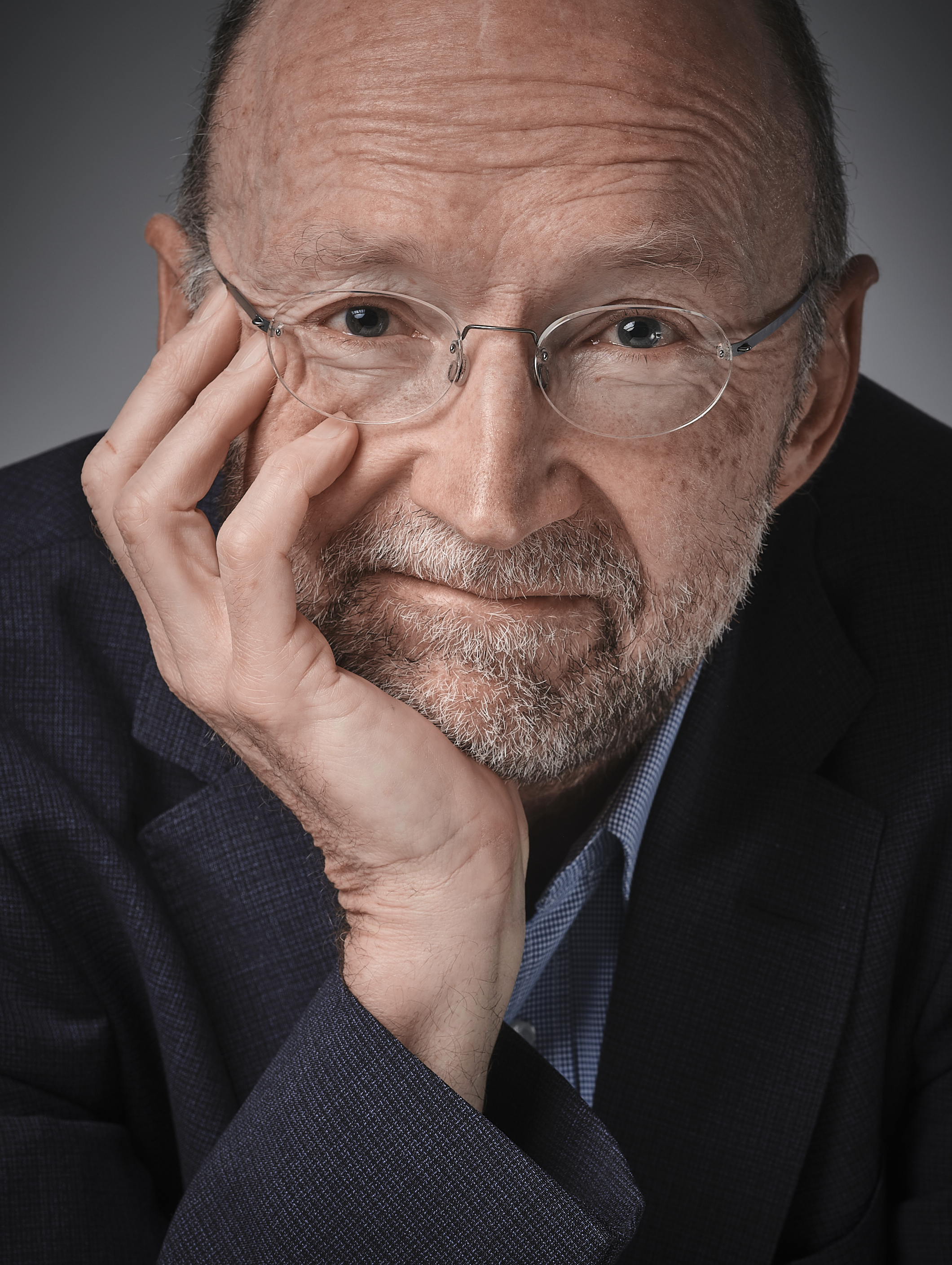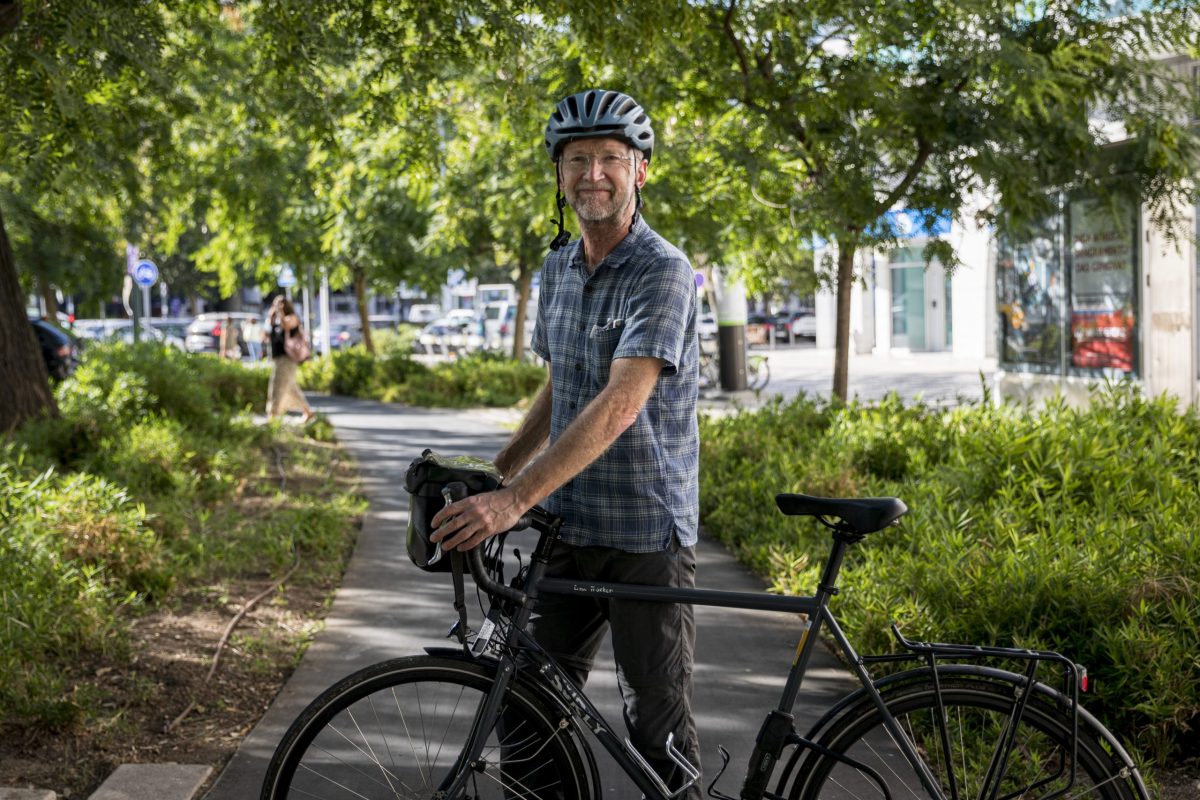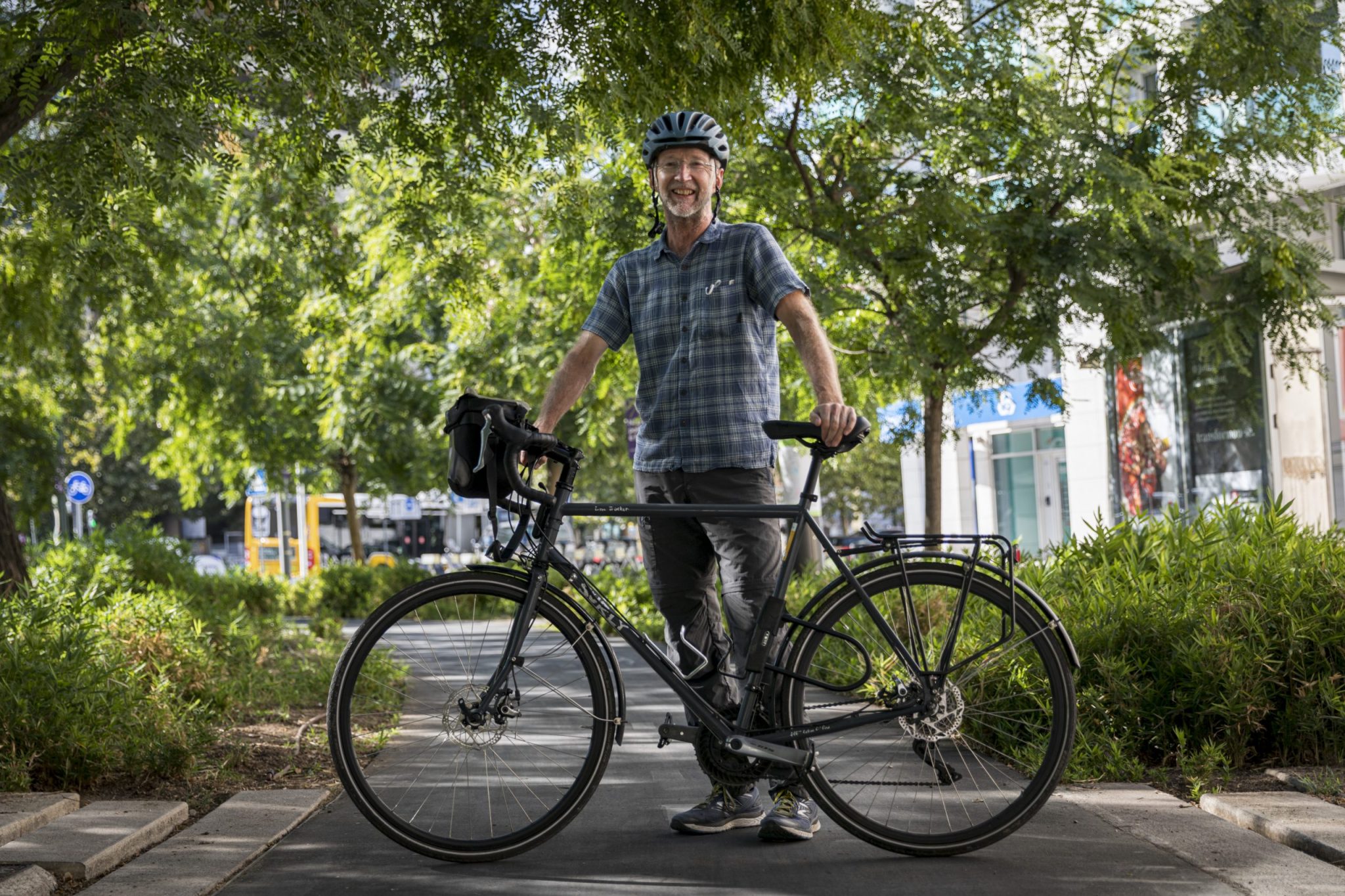Danube Cycle Plans - Interview with Matthew Baldwin
15-12-2021
With Matthew Baldwin, a deputy Director-General in European Commission’s Mobility and Transport Directorate-General, we have talked about new decade of Action for Road Safety, trains and bicycles, sustainable mobility and much more.
Two Danube Transnational Programme projects, the SABRINA and Danube Cycle Plans project (a few words about both projects are below), dealing with cycling have joined forces and prepared a series of interviews with people working in the mobility and transport field, with the focus on cycling. We have asked them about their opinion on different topics connected to more cycling, safer cycling infrastructure, promotion of cycling, etc. Visit the webpages of both projects to read the interviews which will be joined also in the capitalization newsletter published in December 2021 (subscribe HERE).
______________________________________________________________________________________________________________________________
 Matthew Baldwin is a deputy Director-General in European Commission’s Mobility and Transport Directorate-General (DG MOVE) since July 2016. In October 2018, he was appointed as European Coordinator for Road Safety and related aspects of Sustainable Mobility.
Matthew Baldwin is a deputy Director-General in European Commission’s Mobility and Transport Directorate-General (DG MOVE) since July 2016. In October 2018, he was appointed as European Coordinator for Road Safety and related aspects of Sustainable Mobility.
Matthew joined the European institutions in 1999 as Deputy Chief of the Cabinet for Commissioner Pascal Lamy. In over 20 years in the European Commission, he had multiple roles and positions in DG TRADE and DG MOVE. His path in the European Union (EU) institutions took him to the Cabinet of Commissioner Jonathan Hill, where he worked as a Head of Cabinet. Moreover, he was a senior member, responsible for energy and climate issues, trade policy, and development in the Cabinet of President of the European Commission José Manuel Barroso.
Matthew holds a bachelor’s degree in Philosophy, Politics and Economics from Oxford University and a master’s degree in Public Administration from Harvard University. He is British, living in Brussels, Belgium, where you can often find him on his bicycle going to work or enjoying his free time.
______________________________________________________________________________________________________________________________
Matthew, three years ago you were appointed as European Coordinator for Road Safety and related aspects of Sustainable Mobility, which encompasses walking, cycling, public passenger transport and alternative forms of mobility. The EU aims to be an economy with net-zero greenhouse gas emissions by 2050, compared to 1990 levels. How big of a role can cycling play in achieving this goal?
Sustainable mobility has a big role to play overall. Mobility accounts for 25% of total emissions, and it is the only sector which is growing. We need to reduce emissions by 90% by 2050 and contribute significantly to the agreed (and binding) EU target of 55% reduction against 1990 levels by 2030. Hence our new Sustainable and Smart Mobility Strategy, which in a nutshell sets out how EACH mode needs to become sustainable, and how in the short term we need to provide for sustainable alternatives e.g., because solutions for aviation and maritime fuels will take a little longer to come on stream. So, we need to boost transport by rail, the use of public transport and in our towns and cities more active mobility, including cycling. We are coming out with a new Urban Mobility Framework in December 2021 which will set out some new ideas for strengthening what the EU can do in an area which is mainly for national or local competence, including boosting the use and impact of Sustainable Urban Mobility Plans for example.
Cycling already plays a big part in many cities’ plans to decarbonise mobility, to improve health overall and to make cities more liveable and lovable and I am sure that will continue. But I don’t think the Commission should be dictating to cities how much they should use cycling or walking – that’s for cities to decide.
You are a cyclist yourself. Do you use your bicycle rather for commuting and daily errands or more for leisure purposes?
I am somebody who cycles, that is certainly true. It is my daily form of mobility to and from the office and for shopping. Cycling is also my favourite way to spend my holidays, cycling increasingly slowly but still for quite long distances. One of these days I will do the Danube Cycle Path. Such a great way to keep in shape, physically and psychologically! Not sure how I would have got through the lockdowns during the height of the pandemic without my daily bike ride.
 On social media, we could recently see you cycling in many European countries, you even cycled all the way from Brussels to Lisbon for Velo-City 2021 conference, following EuroVelo routes. One of the main focuses of the SABRINA project is the safety of long-distance EuroVelo routes crossing 8 countries from the Danube area. There is a big gap in the availability and quality of cycling infrastructure amongst EU and also Danube area countries. In your opinion, how should countries start addressing the lack of safe cycling infrastructure? Have you had any bad experiences with poor/unsafe infrastructure while cycling and what was it? How could that have been avoided?
On social media, we could recently see you cycling in many European countries, you even cycled all the way from Brussels to Lisbon for Velo-City 2021 conference, following EuroVelo routes. One of the main focuses of the SABRINA project is the safety of long-distance EuroVelo routes crossing 8 countries from the Danube area. There is a big gap in the availability and quality of cycling infrastructure amongst EU and also Danube area countries. In your opinion, how should countries start addressing the lack of safe cycling infrastructure? Have you had any bad experiences with poor/unsafe infrastructure while cycling and what was it? How could that have been avoided?
We’ve all had difficult experiences with infrastructure. It’s tough for local authorities to maintain bike lanes, but it is very important, as a big pothole can have a devastating impact. Nothing beats a good bike path because if we make it safe and attractive, cyclists will use it.
We know the COVID pop-up bike lanes got a lot of use – there is an excellent study which shows that there was up to 48% more use, generating just on its own major health benefits. In my opinion, we should start with building a strong network of bike paths in cities and suburban areas, bike paths that connect up to each other and encourage a culture of daily use. And think about the huge external benefits that bike use generates – perhaps cities in the future can look for financial support to build the bike lanes from beyond their mobility budgets – why not look for support from the health sector?
The EU had a plan to reduce road deaths and serious injuries by 50% between 2011 and 2020. The target was missed but it is now set for 2030. What will be done differently in the next decade? How can we protect vulnerable road users, including cyclists, since we can see their fatality and serious injury rates are declining slower than those from car drivers?
I think we’ve learned a lot from the previous decade. We’re becoming a more and more urban society – 70% of us live in cities, around 80% of people will live in cities by 2050. And in cities, it is increasingly the vulnerable road users (VRUs) such as walkers and cyclists (though given what they do for our cities, perhaps we should be calling them VALUABLE road users) who are dying on city roads – 70% of deaths in cities are to VRUs. We’ve progressively made it safer to travel inside the car by years of design improvements (led by the EU, I am proud to say), but we haven’t yet made it so safe for those OUTSIDE the car. So, we are pleased to see new technologies such as Intelligent Speed Assistance (ISA) coming on stream – all new models by 2022 and all new cars from 2024 will need to have ISA fitted as standard. Countries and cities are also doing a lot to reduce speeds in the urban setting – Spanish towns now have 30 km/h default, as does Brussels, Paris and a host of other cities. And last but not least, I hope we will make the sustainable alternatives so attractive that fewer and fewer people will choose to make their journeys by car – even in the Netherlands, around one third of trips of less than 5 km are done by car. If more and more people go by public transport or use active mobility, we will all be safer.
 2021 is the European Year of Rail. Trains and bicycles seem like a great combination, not only for cycling tourism which is becoming more and more popular but also for inter-urban trips. Towards the end of last year, the EU has decided railway companies would be obliged to provide at least four dedicated spots for bicycles on all new and refurbished trains. It is a big step forward but four seems a small number. Is it fair to hope this is just the beginning of more and better sustainable multi-modality?
2021 is the European Year of Rail. Trains and bicycles seem like a great combination, not only for cycling tourism which is becoming more and more popular but also for inter-urban trips. Towards the end of last year, the EU has decided railway companies would be obliged to provide at least four dedicated spots for bicycles on all new and refurbished trains. It is a big step forward but four seems a small number. Is it fair to hope this is just the beginning of more and better sustainable multi-modality?
I recognise the disappointment that we don’t have more, but it’s a start. We would have liked to see more spots being provided, but it is only a minimum, not a maximum. I think in practice, the combination of bike and train is such a winner that train companies will realise that they can get more customers if they offer the chance to take your bike in the train without hassle.
Connections between sustainable modes are so important, for example, better bike parks at train stations, better chances to take your bike on the train. I think this is going to be a fast-growing trend.
‘Sustainable mobility’ is a very popular phrase lately, especially in urban environments. When towns and cities declare their aim is ‘sustainable mobility’, they often don’t consider cycling as one of its main components. How do you think this can be changed?
I am amazed to keep hearing from people that while they admire what Copenhagen or Utrecht have done for biking, “my city’s not like that”. I hear that people in City X “don’t like cycling”. Or that the city is too hilly. Too rainy. Too dusty. The reality is that every city can be a cycling or a walking city. People respond to the choices we give them. If the only realistic option is using the car, people will continue to use their car (if they have one). If we build the infrastructure for a cycling city, experience shows that it gets used well. But finally, at the end of the day, it’s not compulsory for cities to be “cycling cities”. There are other ways of being sustainable, such as much more use of public transport or walking.
Until the end of 2021, the European Commission needs to publish its proposed update on the regulatory guidelines for Trans-European Transport Network (TEN-T). For now, cycling doesn’t play a big role. Considering the many benefits of cycling, can we expect cycling to be recognized as one of the key modes of transport within the European Union which means there would be also more focus on cycling infrastructure?
We will be making some changes to the TEN-T Regulation, so watch this space. I don’t expect to see cycling become a fully-fledged mode in the sense of rail transport for example for the simple reason that bikes are not (usually) associated with moving people or freight long distances. But biking is going to be an increasingly important mode in the newly strengthened urban nodes under the TEN-T, both for passengers and freight.
What is your first association to the word bicycle?
Happiness, freedom and the wind flying through what is left of my hair (which is not much).
______________________________________________________________________________________________________________________________
Photo 1: Matthew Baldwin (personal archive)
Photo 2 & 3: Matthew with his bicycle in Lisbon after biking from Brussels to Lisbon to attend Velo-City conference 2021 (Francisco Romão Pereira)
______________________________________________________________________________________________________________________________
A few words about both projects:
- SABRINA project focuses on road infrastructure safety for cyclists as one of the most vulnerable road users. It tackles cycling infrastructure safety issues on existing, planned, and missing cycling corridors crossing nine countries in the Danube region. The main goal is to help decision-makers plan, design, and implement safe and sustainable solutions for improved cycling infrastructure in the region. More at the project’s webpage, Twitter or Facebook account.
- Danube Cycle Plans project aims to implement Pan-European Master Plan for Cycling Promotion. Project activities include the development of National Cycling Plans based on a common transnational Danube Cycling Strategy, defining a Danube cycle route network, infrastructure standards and adequate financial support and increasing the awareness of relevant stakeholders for the needs of cyclists. More at the project’s webpage.
